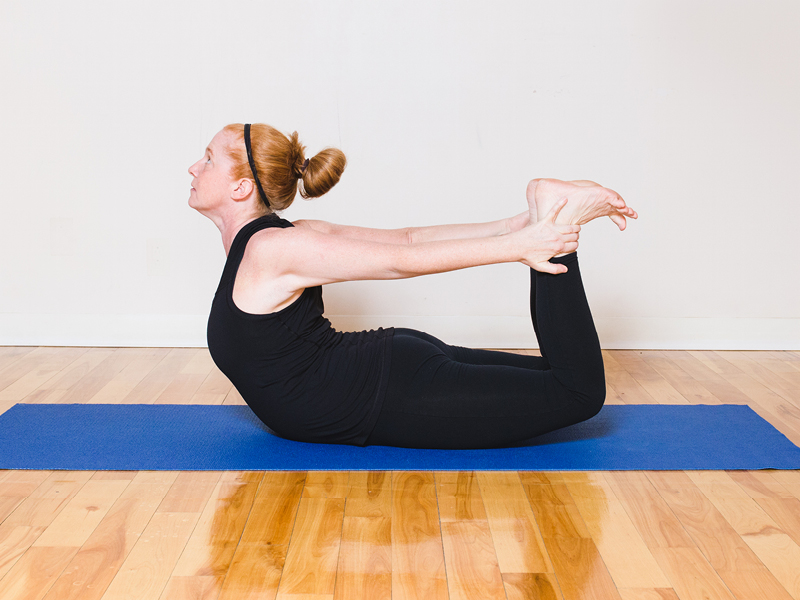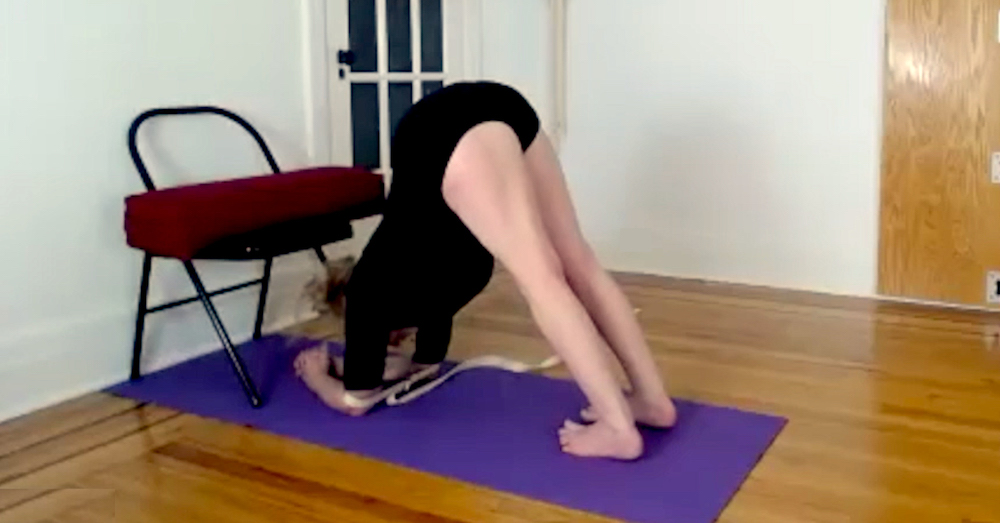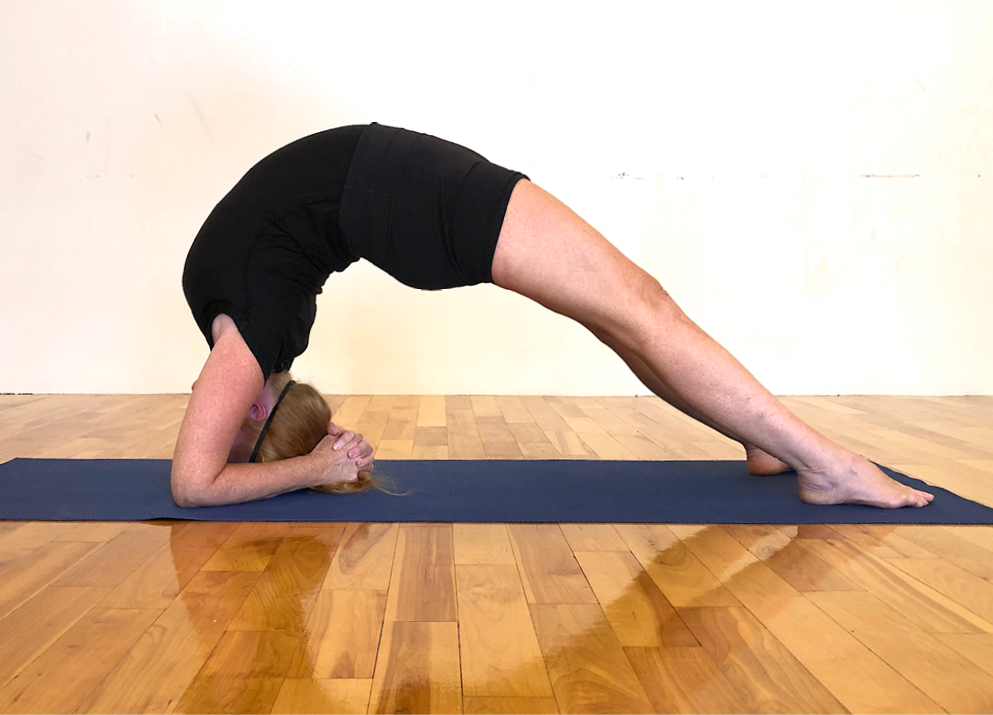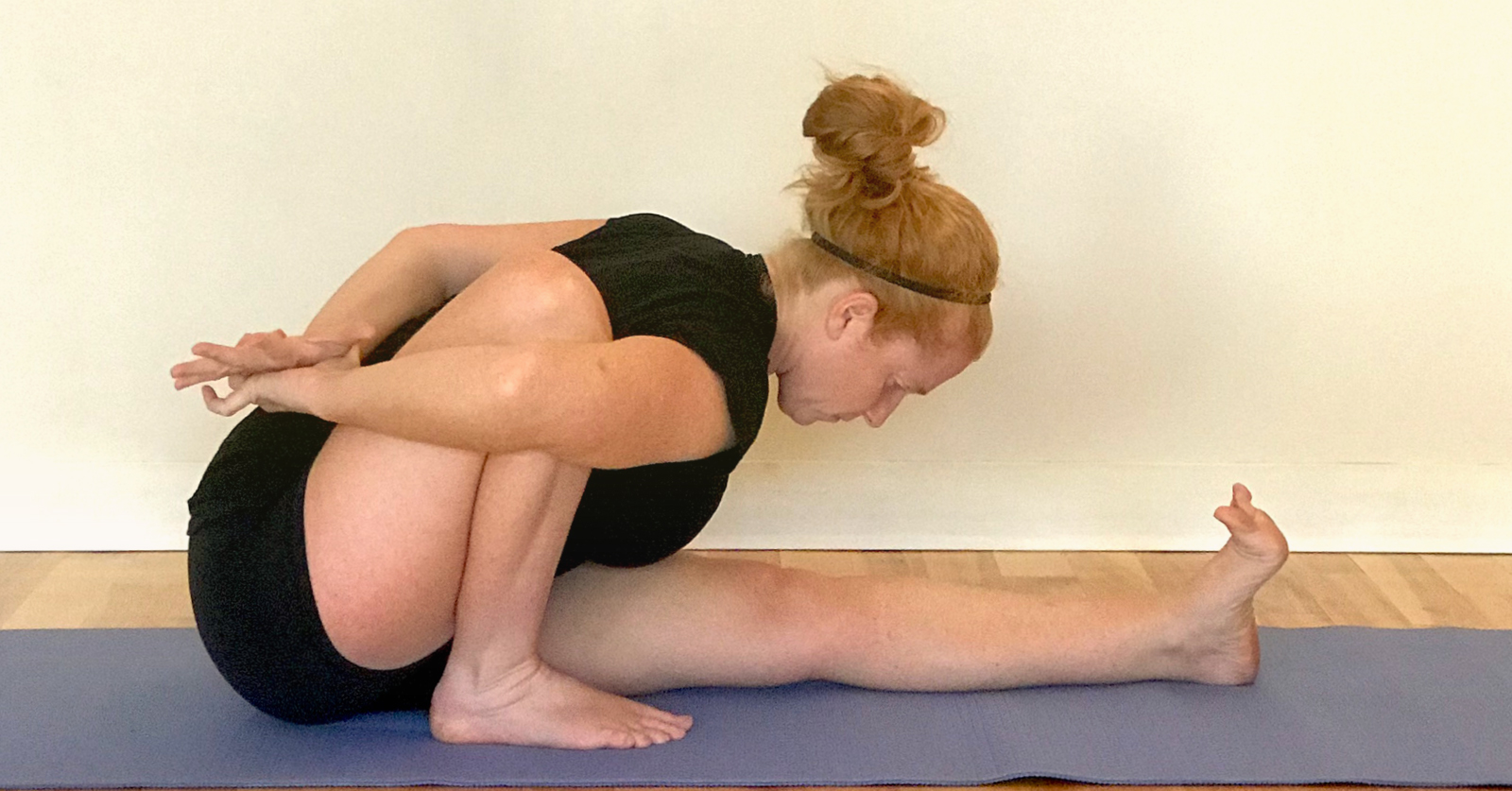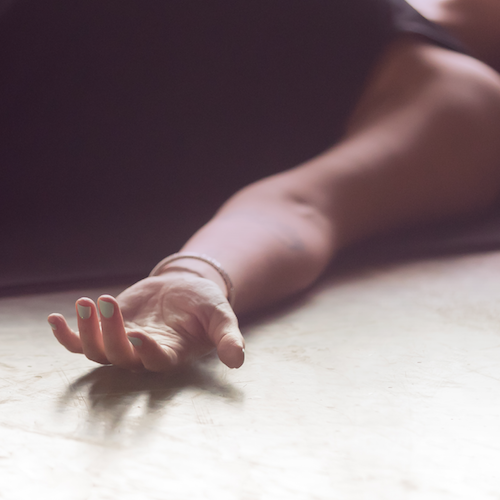Yoga Corner: Asana + Variations
The poses demonstrated here by Donna are intended to show the classical version of the pose, as well as the variations we use at United Yoga Montreal. Variations are introduced for a variety of reasons and purposes to aid in deepening our student’s understanding of the pose.
Dhanurasana
Bow Pose
In Dhanurasana, the entire body is curved to resemble a bow. This back bending posture brings suppleness to the spine and tones the abdominal organs as well as opens the chest area to help improve breathing.
Variation 1– In this variation the feet are placed on the floor hip-width apart with the little toes in line with the outer heels. The crown of the head is supported by the floor but please take note that if the head does not reach the floor easily, a prop like a block, blanket or bolster can be used to support further. The pelvis and the lumbar spine are supported by the seat of the chair to help students understand that the lumbar spine has to lengthen, and not compress in the backbend. Then, the lower tip of the shoulder blades are on the front edge of the chair to deepen the back bending action at the upper thoracic spine. The arms are extending back to reach the back legs of the chair to open the chest even more. The block is placed at the lower inner thighs to help keep the knees in line with the hips and ankles. This also helps with adduction of the lower inner thighs, which is to move the inner lower thighs towards one another in an equal way.
Variation 2– In this variation we place the knees at the wall and keep the lower part of the femurs (close to the knees) grounded into the floor while bringing the feet as close to the wall as possible. This action teaches a healthy back bend which is produced from opening in the upper thoracic spine and shoulders, and not by compressing the lumbar spine. The block is placed at the lower inner thighs to help keep the knees in line with the hips and ankles and also to help with adduction of the lower inner thighs. Finally, the belt around the ankles* helps to align the ankles with the knees and to aid with abduction at the upper outer femurs (the greater trochanter area) by pressing outward into the belt with the ankles, which then creates more space in the lower back.
* see detail photo.
Variation 3– This variation is done in the ropes and slings. The sling is placed at the sacrum to protect the lumbar spine. The knees are in the wall at the level of the hips (not above). The hands grab the ankles and the feet are pushed completely into the wall to extend the arms which helps to open the chest more deeply.
NB – If the hands do not reach the ankles, a belt can be used to help develop the pose. * see detail photo.
Prepared and demonstrated by Donna Read
Donna would like to express gratitude to her teacher, Hart Lazer and to his teachers for their inspiration and wisdom.

